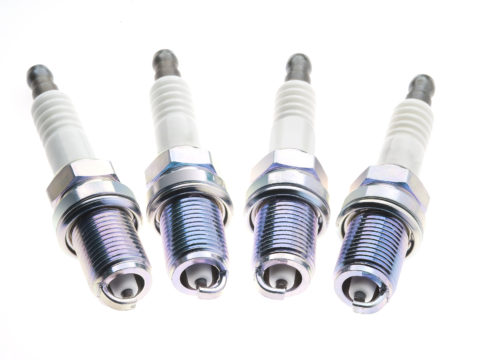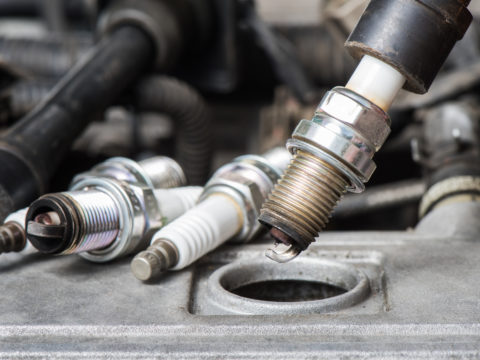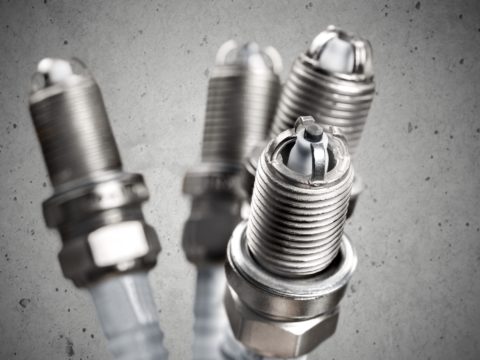Spark plugs that are left uncleaned and unmaintained tend to foul quickly and cause engine operations to become inefficient or, worse, prevent them from running at all.
The dirtier your spark plugs are, the more fuel they’ll need to produce a spark and power your engine correctly. Thus, it’s essential to clean your spark plugs regularly. To help you out, here are common warning signs that indicate the need for cleaning.
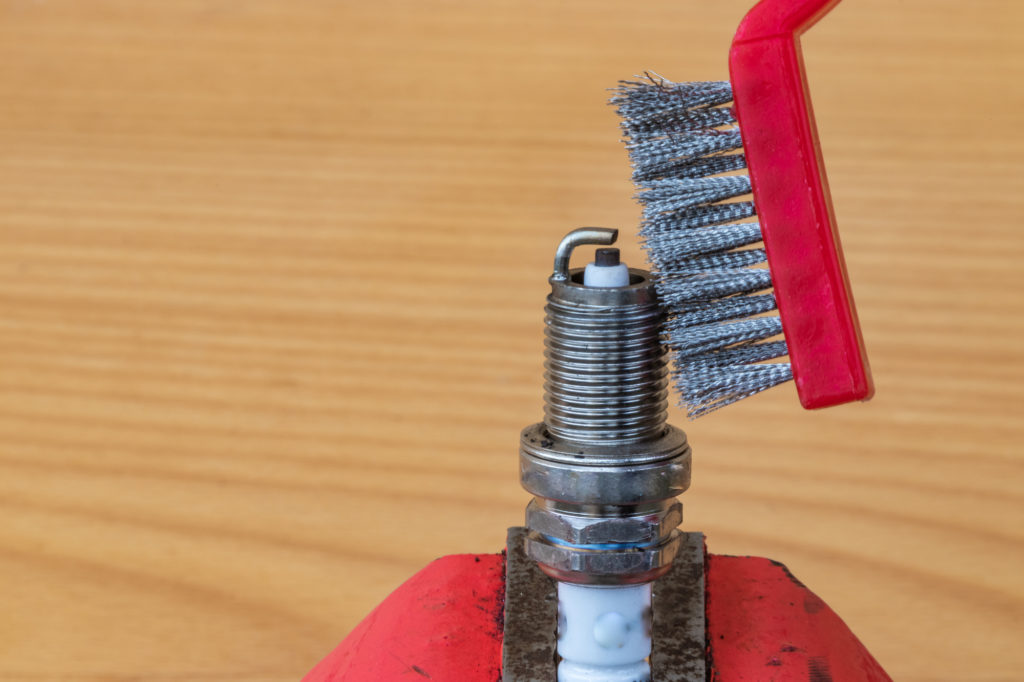
Contents
Why Do Spark Plugs Need Cleaning?
Oil on Spark Plug Thread
There are many reasons why oil ends up on your spark plug thread. The most common causes would be a leaking O-ring or valve cover, but they can also arise from more serious problems like faulty piston compression rings or worn valve guides.
Ultimately, it is best to contact a mechanic to help you resolve the root cause. Once it’s fixed, that’s when you’ll need to clean your spark plug by removing the wire, unthreading it, and washing the whole plug to get rid of all the oil.
Oil in the Spark Plug Well
The oil that accumulates in your spark plug well may be caused by similar issues in your O-ring seal, piston compression rings, or valve guides. While this is a relatively common problem, you should still address it immediately to prevent damaging your engine.
Again, after the necessary repairs are done, it’s essential to clean your spark plugs thoroughly. First, spray carb cleaner into the spark plug hole, then use a rag to clean off the oil. Repeat this multiple times until you’ve gotten rid of the oil completely.
Carbon on Spark Plug
If you notice carbon deposits on your spark plug, this could mean a dirty air filter, an overly rich air-fuel mixture, or excessive idle time. Whatever the cause is, carbon fouling can lead to combustion issues since the carbon is conductive, so you need to clean it right away to prevent any risk of fire.
To clean off the carbon in your spark plug, you can use a cleaner from a local hardware store or wire brush. Some would also use a butane torch to burn off any excess carbon, so you can try this out if you know how to handle the tool.
Rust on Spark Plug Thread
Rust can occur naturally over time due to exposure to environmental conditions or the use of metal and aluminum in some spark plugs. Regardless, it’s important to clean the rust on the threads, or they might get too tight and become hard to remove from the engine.
When to Clean Spark Plugs
It goes without saying that the moment you notice symptoms like trouble starting the engine, high fuel consumption, or lack of acceleration, you should inspect and clean your spark plugs immediately.
That said, you should still clean your spark plugs regularly, even if there aren’t any visible issues or problems. The general rule is to clean them every 5,000 miles, but this is the recommended frequency for spark plugs with shorter lifespans like 10,000 to 20,000 miles. For those that last longer, you can clean them after every 20,000 to 30,000 miles.
Cleaning Spark Plugs vs. Replacing
While it’s now clear that cleaning spark plugs is a must to maintain efficient engine operations, the other big question is how you will know if you should simply clean or replace these parts. Generally, spark plugs can have varying lifespans, with some having as little as 20,000 miles to others having as much as 100,000 miles.
However, in some cases, you might have to replace them before the end of their lifespan, and the best way to determine this is first to remove and clean your spark plug. Then, you can inspect its condition. Here are the common scenarios where you’d need to change your spark plug to a new one:
- The thread heavy carbon deposits that can’t be cleaned, removed, or scraped off
- There are visible cracks and breaks in the spark plug
- The electrode is burnt, damaged, looks melted, or turning black
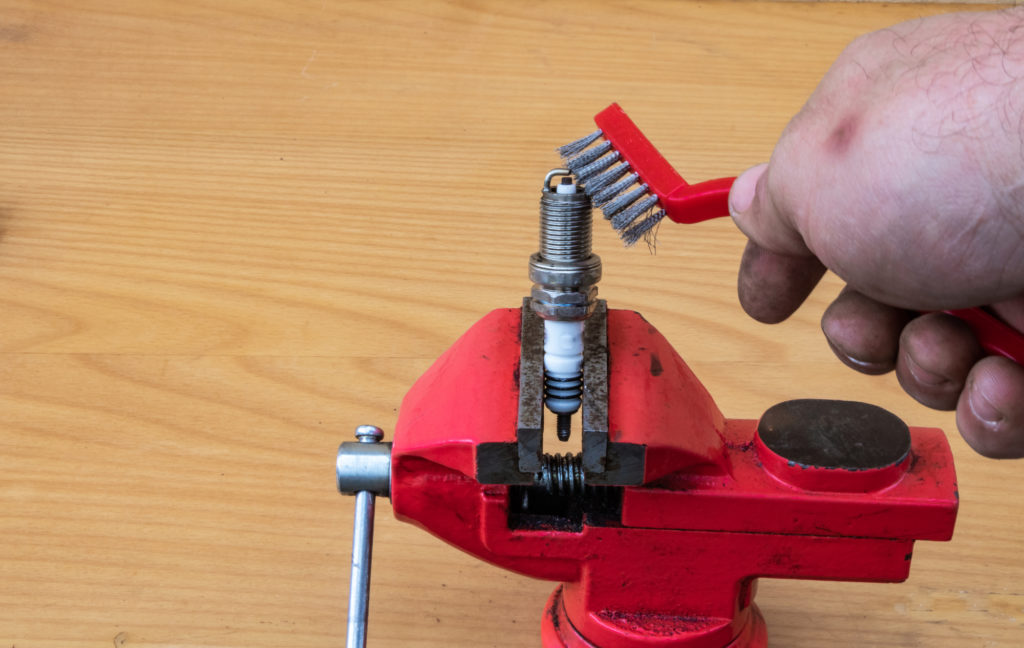
5-Step Guide to Cleaning Spark Plugs at Home
Cleaning a spark plug isn’t as hard as it sounds. It might be tricky the first few times, but you’ll get the hang of it over time. Here’s a quick five-step cleaning guide that you can do at home.
Step 1: Remove the Spark Plug
First, you’ll need to remove the spark plug from the engine to clean it properly. Before doing this, make sure you wait for your vehicle or machine to cool down. Start by using your hands or pliers to remove the spark plug wire, then use a ratchet wrench to unscrew the spark plug.
Step 2: Inspect the Plug
Once you’ve removed the spark plug from the engine, do a visual inspection to check for carbon deposits, blistering, burns, and other issues. From here, you get a good idea of what to look out for while cleaning the plug.
Step 3: Clean Spark Plug
There are many standard household products and tools suitable for cleaning spark plugs. For example, you can use a rag to remove loose debris. For more deep-seated dirt and deposits, spray the plug with carb or brake cleaner and use a wire brush to scrape them off.
Make sure you blow off any remaining residue and debris using compressed air to ensure that you’ve cleaned the plug inside and out.
Step 4: Check the Gap
Before returning your spark plug to its proper position, check the electrode gap to ensure it’s measured correctly. The appropriate measurements should be indicated in your car manual.
Step 5: Reinstall the Plug
Apply some grease to the spark plug boot, then reinstall it to your engine. Tighten it to the right torque with a wrench, but avoid over-tightening the plug. Double-check the wiring to check if it’s installed properly, and you’re good to go. You can test out your engine to ensure everything’s working as needed.
Recommended Products for Cleaning Spark Plugs
As mentioned, you don’t need highly specialized products to clean your spark plugs, as many household items will already work. Here are the recommended products you should use for your plugs:
- Clean rag
- Wire brush
- Brake or carb cleaner
- Spray-on plug cleaner
- Alcohol
- Blow torch
- Sandpaper
As you can see, you don’t need too much to keep your spark plugs clean, but cleaning them regularly can make all the difference for your engines and keep them durable for a long time.

